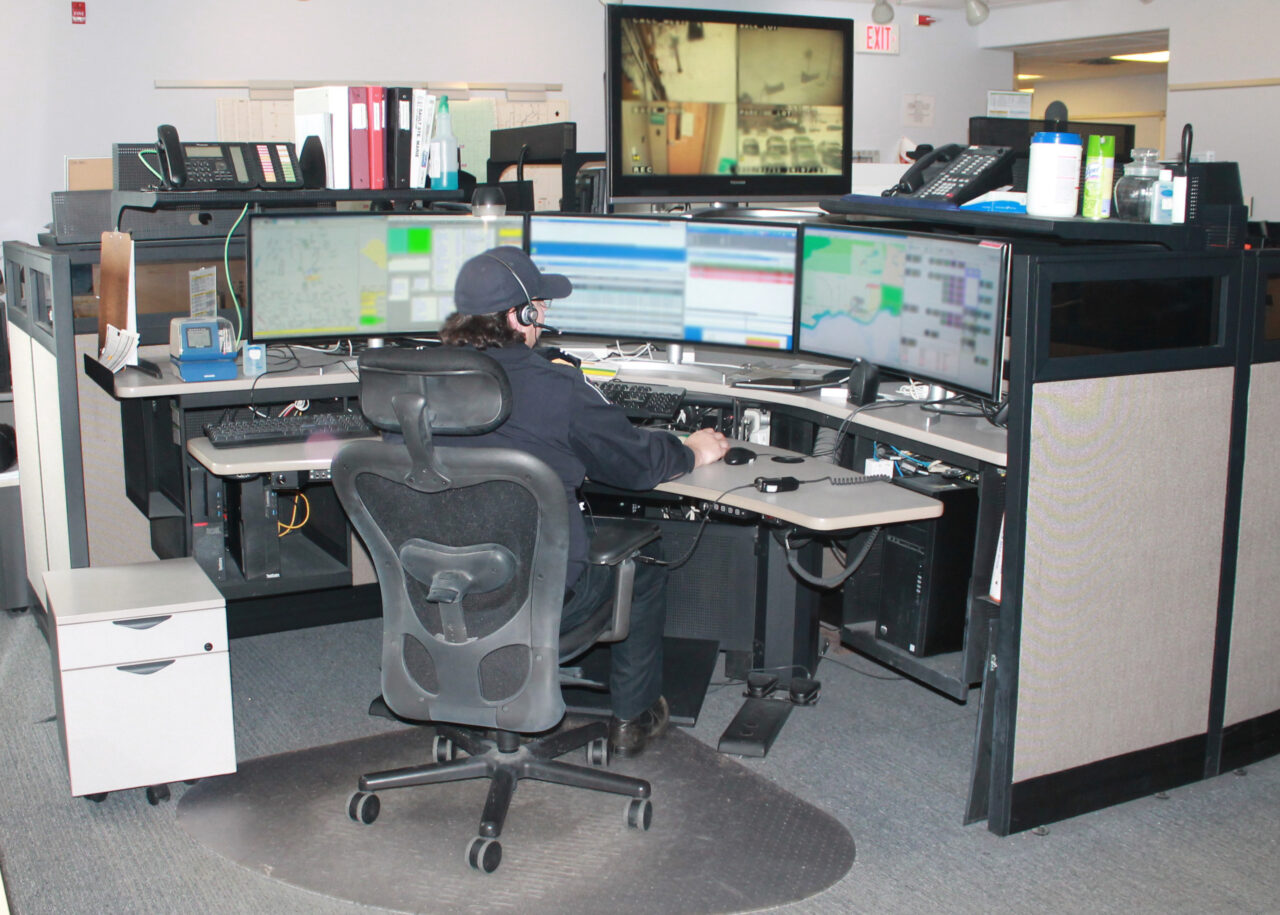If you are having a medical emergency, CALL 911.
Behind the Scenes of Central Ambulance Communication Centre (CACC):
Who we are and what we do.
Sault Ste Marie CACC is responsible for handling requests for emergency ambulance services through the 9-1-1 system. We have been provided with a call-screening tool by the Ministry of Health, which enables us to quickly and accurately assess the condition of the patient, their location, and the overall situation. In addition, we provide potentially life-saving instructions to the caller before the ambulance arrives.
Our Mandate
To make accessible to all persons the assistance of available ambulance services, and the efficient and effective use of those services to provide response that is:
RAPID
ACCURATE
SEAMLESS
INTEGRATED
Behind the Call:
When You Dial 9-1-1
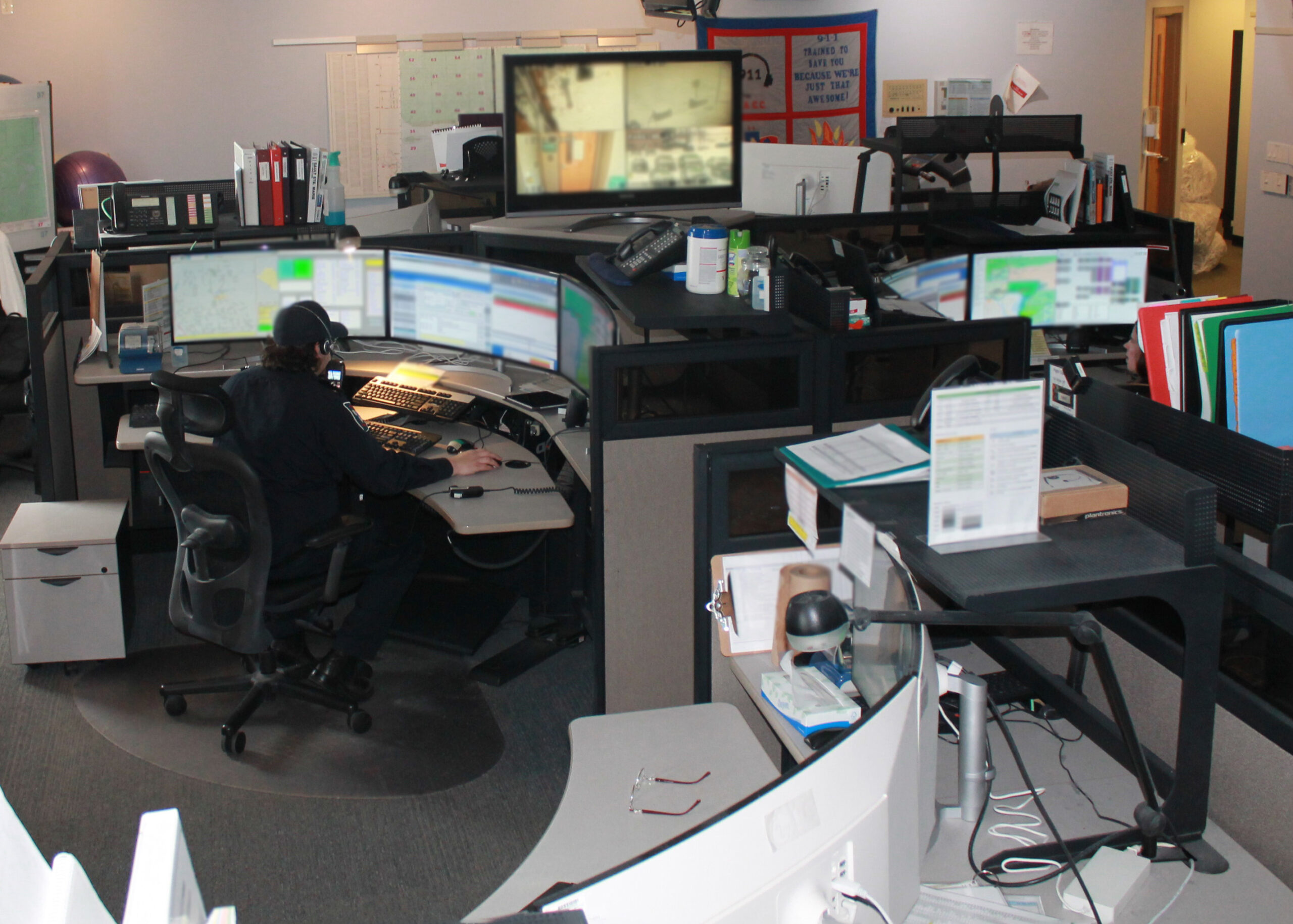
You identify that you or someone else is in need of an ambulance.
When you call 9-1-1, an operator will answer and ask "Do you need police, fire or ambulance?" Once you have identified you need an ambulance, your call is then routed to the Central Ambulance Communication Centre.
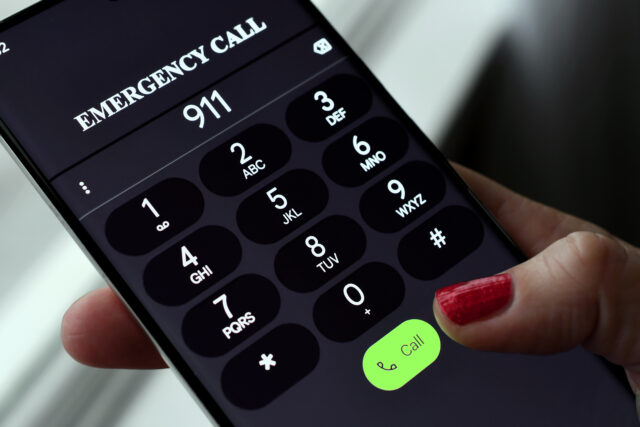
Call Initiated.
We get an alert of an incoming call via our internal alert system, and we answer the call.
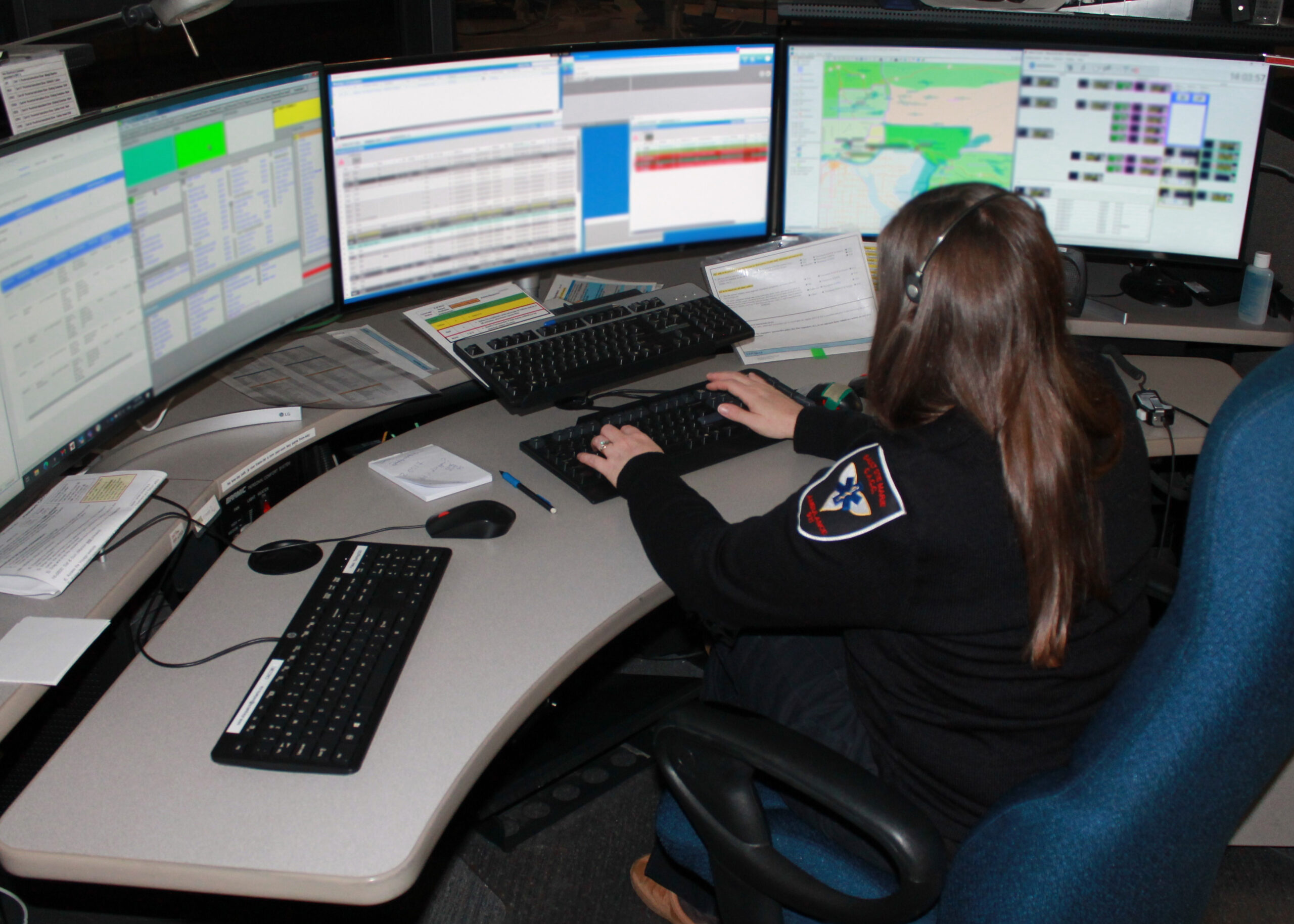
We answer your call.
The Ambulance Communications Officer assigned to this role will answer your call, they are "The Call-Taker." They will begin to ask you important questions from our call screening tool to assess the needs of the person(s) needing ambulance assistance. These highly skilled professionals are meticulously trained in establishing courteous and efficient communications with each person requesting ambulance service.
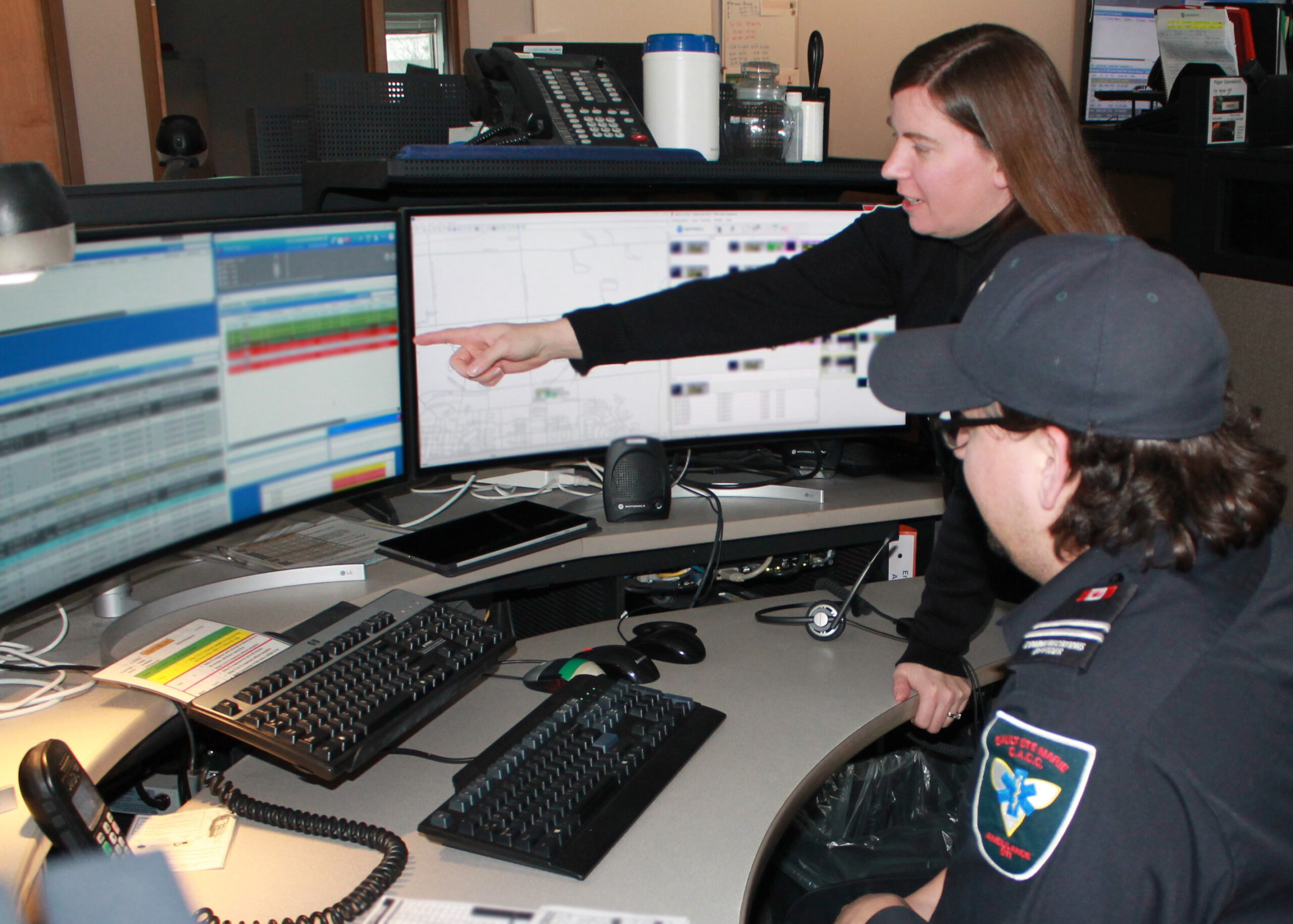
We send help your way.
"The Dispatcher" is ready to send help your way. The Ambulance Communications Officer assigned to this role will review the call information from the call taker's communications and notes with the caller and will simultaneously assign the closest available ambulance resource to all emergency calls.

What happens next?
The call-taker will then direct you on what to do next . That can include directing you to monitor the situation and call back if things change, they may stay on the phone with you until help arrives, or they can talk you through performing life-saving measures to assist the person(s) in need until an ambulance arrives on scene.
Did you know...
Every call we receive gets a "CODE."
A Code is the response priority as determined by the call taker at time of initial call receipt, or as updated from subsequently learned information, as well as the transport priority as determined by the attending emergency medical attendants/paramedics.
Code 1: Deferrable Call
A non-emergency call which may be delayed without being physically detrimental to the patient.
Code 2: Scheduled Call
A non-emergency call which must be done at a specific time due to the limited availability of special treatment or diagnostic/receiving facilities. Such scheduling is not done because of patient preference or convenience.
Code 3: Prompt Call
An emergency call which may be responded with moderate delay. The patient is stable or under professional care and not in immediate danger.
Code 4: Urgent Call
An emergency call requiring immediate response. The patient is life, limb or function threatened, in immediate danger and time is crucial.
The Team Behind Your Call
This ACO answers and processes all requests for ambulance in prompt and efficient manner using the mandated screening tool and established protocols in order to stabilize and effectively communicate with each individual who requests ambulance services across the Algoma Region.
When you call for emergency medical assistance, the call taker will first confirm the location where the paramedics are needed using a system called Automatic Number Identifier/Automatic Location Identifier (ANI/ALI). They will then ask you some important questions about the patient’s condition:
- “Is the person awake?”
- “Is the person breathing normally?”
- “How old is the person?”
- “Tell me what happened.”
If the patient’s condition does not appear to be life-threatening based on your answers, the call taker may ask additional, more specific questions. If the situation is serious, they will provide immediate instructions for life-saving measures over the phone.
The call will be prioritized and sent to the Dispatcher, who will dispatch the paramedics as quickly as possible – utilizing the closest ambulance in time to the location of the emergency. For life-threatening emergencies (Code 4), the call must be prioritized and sent to the dispatcher within 45 seconds at the 90th percentile.
While the paramedics are on their way, the call taker will continue to gather more information using a flow chart called the Dispatch Priority Card Index (DPCI). This chart directs the call taker to ask specific questions depending on the type of emergency. The DPCI can also help the call taker provide instructions for first aid before the paramedics arrive.
It is important for call takers to remain calm and collected, as they handle a high volume of calls from distressed individuals each day.
This ACO will assign the closest available ambulance resource to all emergency calls in time, not distance, to the call’s location in accordance with the deployment plan.
The dispatcher first receives the emergency call information on their main computer screen. They are notified by both visual and audible prompts that a call needs to be dispatched. The next step is to locate the address in a computerized mapping system to identify the closest most appropriate paramedic unit to respond to the call. This all must take place within 75 seconds or less.
The paramedics are then notified of the call via radio or paging system. Once the ambulance is en route, the dispatcher provides paramedics all the relevant information they require to help the patient including the call location, hazards (if applicable), the patient’s age and gender, the type of medical emergency and what additional resources are responding.
The dispatcher will monitor the paramedics from the time they are en route to the scene of the emergency until the time the paramedics clear the hospital and become available again. Meanwhile paramedic units to strategic positions within the city and Algoma District as dictated by the deployment plan. They also monitor eating periods, as well as work to ensure paramedic units are sent home on time at the end of their shifts.
The dispatcher also assigns all other non-emergency calls in accordance with deployment plans and in a manner which does not compromise emergency coverage. They do this all while adhering to the emergency coverage statements set out in policies and SOP.
This ACO is responsible for monitoring:
- four radio channels
- up to 18 ambulance
- seven first reponse teams
- up to 21 Fire Departments and any local aircraft transmissions.
This ACO provides break relief for all on-duty staff and assists in overflow workload from the call-taker and dispatcher in order to support the team, as needed.
This ACO oversees and supervises the operations of the CACC call floor. They liaises with all stakeholders, performs equipment troubleshooting, and assists in call-taking and dispatching duties to support the team, as needed.
The Computer Aided Dispatch (CAD) System
Ambulance Communications Officers use a Computer Aided Dispatch (CAD) system to intake, dispatch, log and monitor all calls that come into ambulance.
The Computer Aided Dispatch (CAD) system consists of:
- 4 separate operating systems,
- 3 large computer monitors,
- 1 laptop for administrative work,
- 1 back up mapping system,
- A Windows based telephony system,
- Computer Aided Dispatch with information about unit status and availability, active calls and mapping,
- and Fleetnet (our radio system).
Each member of the call team has their own assigned CAD system and station on the call floor based on their assigned role for the shift.
